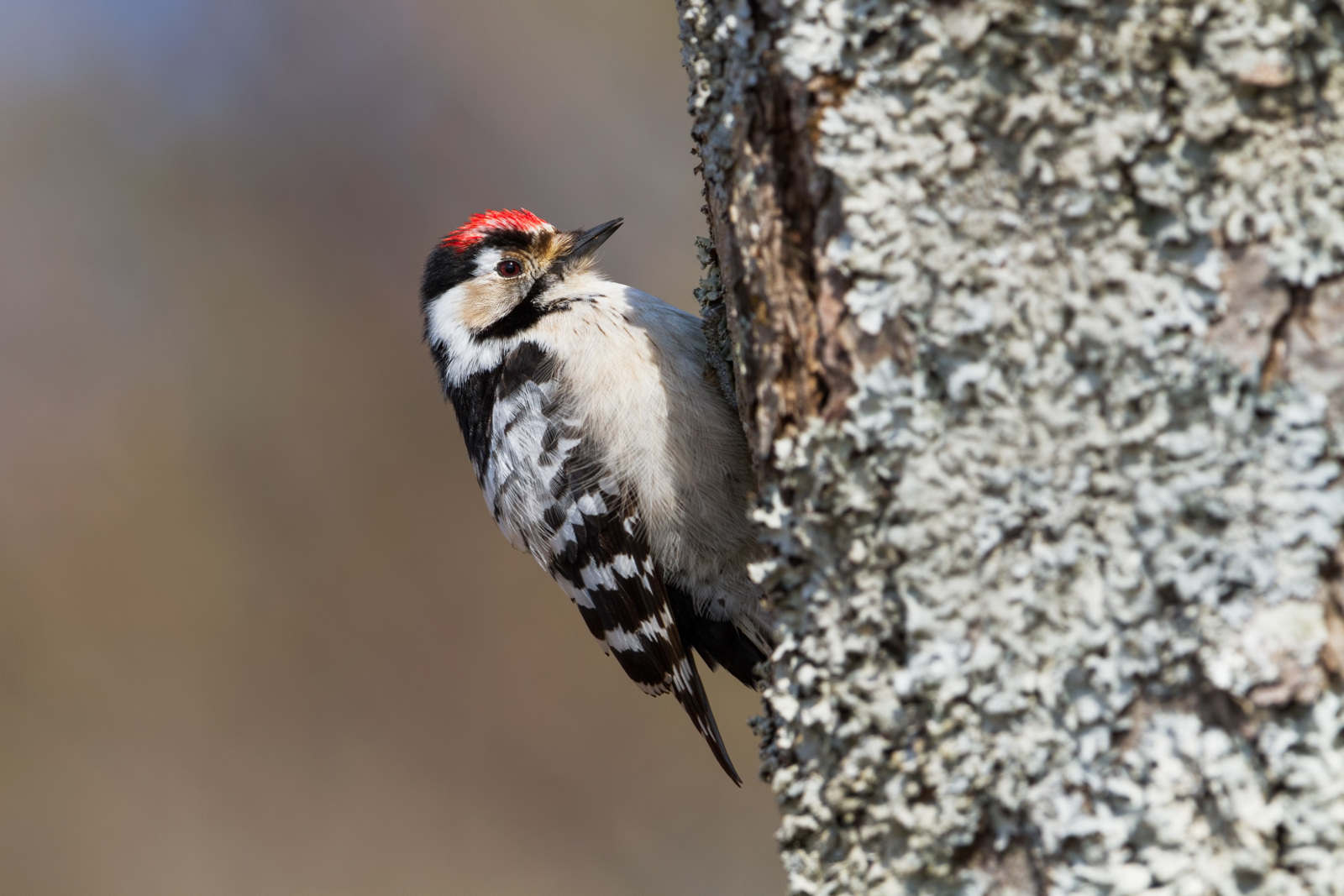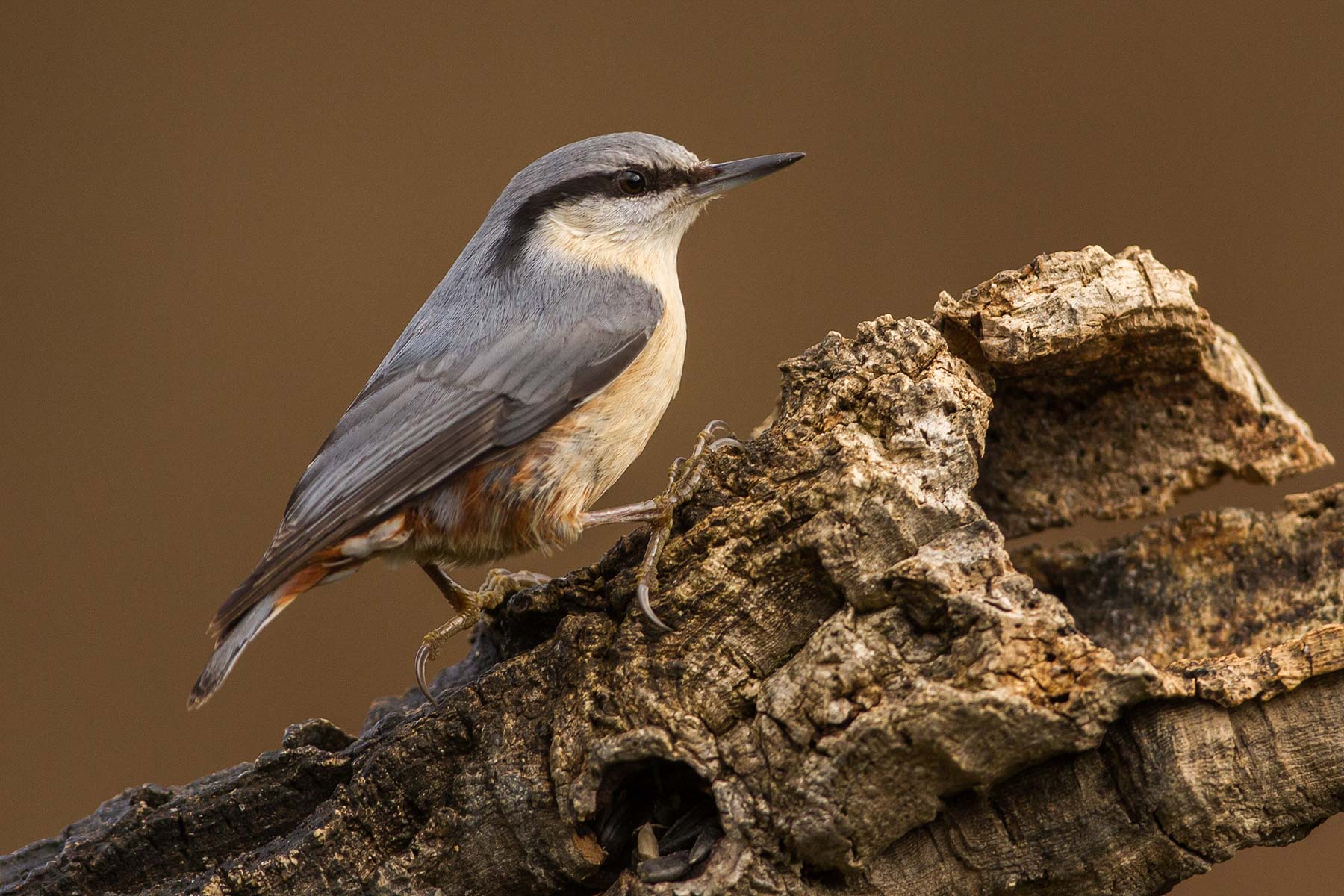Lesser Spotted Woodpecker (Dendrocopos minor)
Although the smallest woodpecker species is only a size of a sparrow, it does not differ much from its larger relatives concerning appearance and behaviour. It is a common species in deciduous forests. It forages mainly in the foliage, looking for insects and spiders on dry thin branches. During winter we can observe this bird creeping on tree trunks, too, searching for food under the bark. It excavates its own nesting hole into decaying softwood or fruit trees. In nesting season it demonstrates its territory by rapid pecking.



